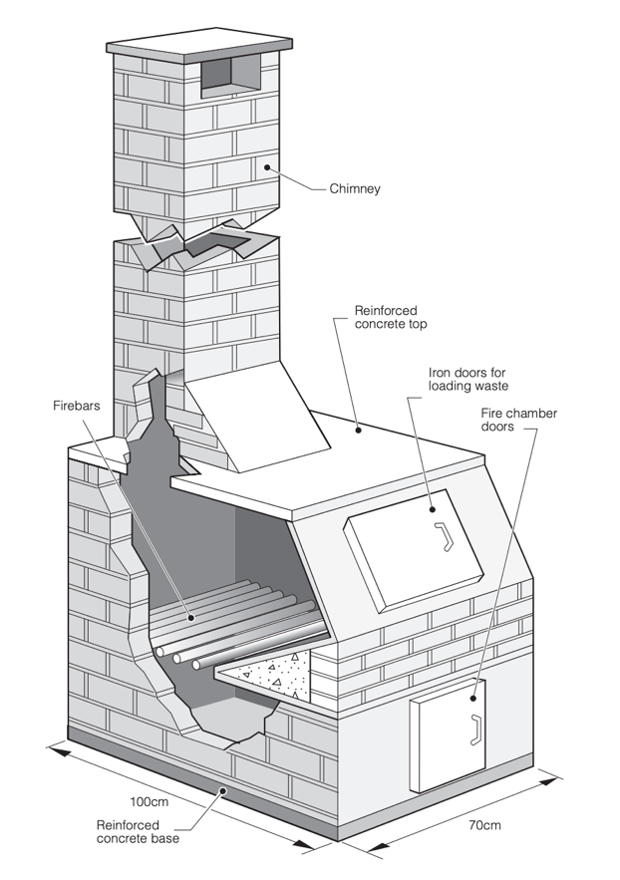9.9 Incinerator
The design of an incinerator needs to consider most essentially the air supply. Good incineration requires the right combination of carbon and oxygen. The following aspects are advised to be considered in the incinerator design to have adequate oxygen supply:
- Air inlets must be sized and located to allow a good air mixture with the sludge/biosolids.
- Chimney diameter and length must be carefully designed (not too short and not too long) to control draught.
- The incinerator should be located away from buildings, trees, or other obstacles.
- Ashes and other residues that block the free passage of air must be removed routinely.
The following design allows us to take the different recommendations into consideration.

This type of incinerator is usually able to operate at temperatures of 1000°C or above. It is constructed from brick and concrete with iron or metal doors. This design with a base chamber size of 1.0m x 0.5 m will be able to combust 100 kg of waste per hour.
While this type of incinerator is usually highly effective in the combustion of any waste, it is nonetheless challenging to control process temperatures.
When properly designed and operated, an incinerator has ideally low or zero visible emissions and should not emit solid particulate matter from the stack. If thick black smoke is emitted, it is a sign of incomplete combustion. There is too much carbon dioxide, unburned hydrocarbons, and other pollutants in the smoke. The cause can be that the incinerator is either inadequate or not operated properly.
For further information, please click on the Materials tab at the top of the page.
